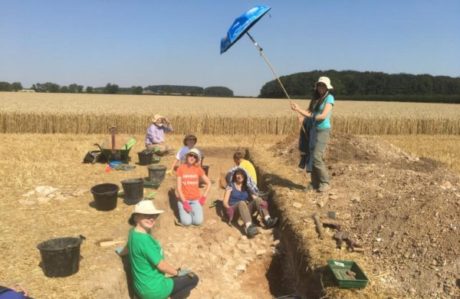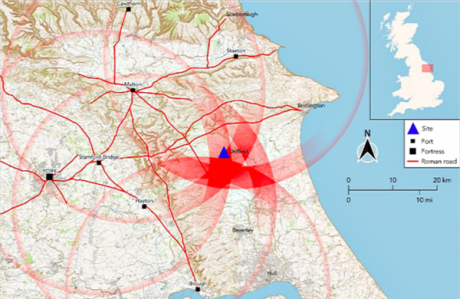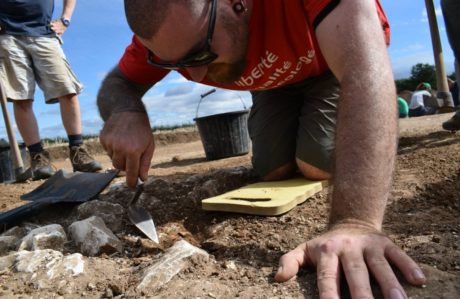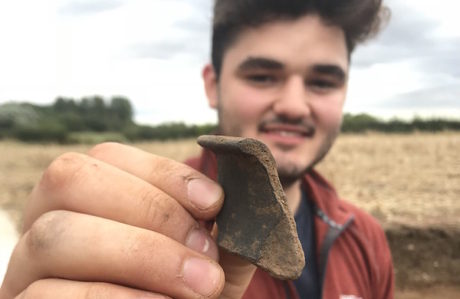
In 2018, our crowdfunded excavation in East Yorkshire unearthed evidence of one of the earliest Roman settlements north of the Humber. Now, we’re getting ready to continue the investigation, and delve deeper into the lives of the site’s first Roman inhabitants…
Two thousand years ago, the Romans marched north and established a centre at York. But while archaeologists have found many later Roman settlements from the 3rd and 4th centuries AD, only a handful of sites inhabited by the earliest Roman settlers in the region have ever been found.
That was until 2018, when we began a crowdfunded excavation at a site where metal detectorists had previously discovered a stunning Roman coin hoard.
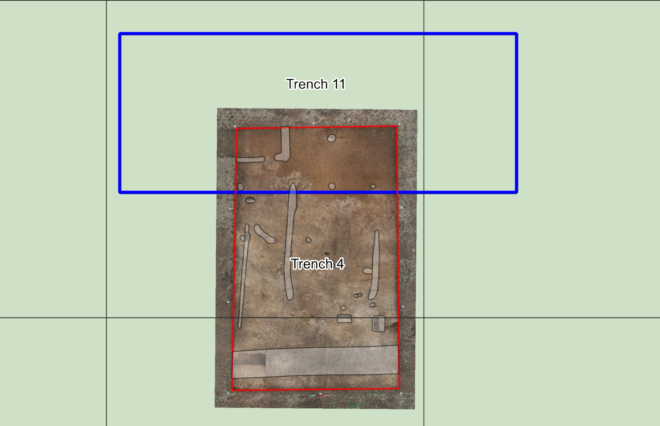
Trench 11 – where we’ll be digging in 2020 in order to expand the area we excavated in 2018 (Trench 4)
The discoveries we made on that excavation have shown that the hoard was just one small remnant of a much wider Roman settlement; there are buildings, mosaics, more silver coins, hundreds of Roman pottery sherds, and a tiny brooch, found on one of three infant burials.
Many of the finds date from around AD 60, which would make this one of the earliest Roman settlements ever discovered in Yorkshire.
Who lived here? What were their lives like? And what happened over the next few generations? That’s what we’re returning to the site to try and find out more about.
So far, expert analysis of our discoveries has already started to paint a pretty good picture, and it seems that the site became pretty significant from soon after the conquest, right until the very end of the Roman period.
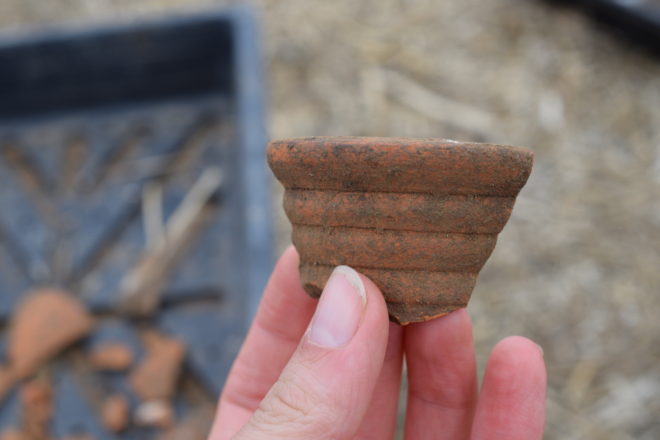
An example of ‘fancy’ wheel-thrown Roman pottery found on the early part of the site in 2018.
Our first clue is the pottery. We found 398 sherds, which together give us a good idea of the wares that were being used by the site’s first inhabitants. The collection seems to be rather fancy, with a lot of wheel-made pottery and specialist Eboracum (York) table wares, including a carinated bowl, a rusticated jar, a flagon with a pulley wheel rim, and a ring- necked flagon – very unusual for a humble rural site of this period.
In fact, our pottery expert Ian Rowlandson said this early Roman collection had much more in common with the ceramics used by people living in the fortress at York – a clear sign that our early Roman settlement here at Elmswell likely had an official or semi-official function. It could have been a mansio (posting station), or perhaps gifted to a soldier and his family to help Romanise the local area.

Careful excavation of an infant burial at the early Roman part of the site in 2018. The remains will be reinterred at the site in agreement with the landowners.
Meanwhile, the human remains tell us something even more personal about those who lived here. We found 44 human bone fragments, including the partial remains of one adult, and three infants. The oldest of the infants appears to have been a little more than newborn, and was found buried on its right side in an oval grave next to a beam slot (building feature). The second had been buried on its back within a rectangular grave, and the third within a small circular pit or posthole.
Although some archaeologists have used such finds as evidence of infanticide, our osteological expert Natasha Powers says that clusters of infant burials are often found alongside Roman buildings, like at Barton Court Farm in Oxfordshire. The careful way the infants were buried (one of them was also buried with a miniature brooch) suggests that they were placed in the ground by grieving parents.
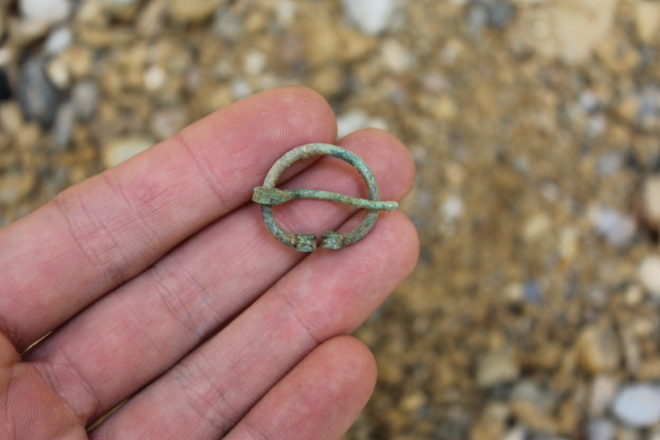
Miniature pennanular brooch, found within one of the infant burials at the early Roman part of the site in 2018
The brooch itself has now been identified as a Fowler type C brooch, dating 1st century BC – 1st century AD. According to our expert Stuart Noon, these brooches were so popular that they were often used and re-used over centuries, all the way up until the 7th century AD.
Along with a few small ceramic fragments found withing the grave fills dating to AD 100-200s, it may be another sign of our site’s early occupation, and a tough reminder of the difficult reality faced by those who settled here, and their descendants. Now that the remains have been examined, they will soon be returned to the site for reburial.
Ontop of all this, there were animal remains, molluscs, Roman metalworking waste, coins (some of which date back to AD 69-70), all of which add their own dimensions to the story, and which you can read more about in the 2018 Dig Report.
In 2019, we headed off to another part of the site, where we found traces of a slightly later Roman villa, showing how settlement of the area developed over the next few generations – from an official or semi-offical site, it became a community that was prosperous enough to sustain an entire villa and farmstead.

Rosalind happily excavating a series of postholes that formed part of a villa on the later part of the site in 2019
This year, we’ve got another chance to return to the early part of site to see if we can add to this emerging picture. We’ve already chosen our trench location, and will be opening a 25m x 10m trench positioned over the northern end of Trench 4, where the edge of a building and the three infant burials were found.
This carefully chosen spot should allow us to see a bigger piece of the puzzle, and get more evidence that will help us to understand the settlement, its buildings, and its occupation over time.
We’ll be looking at the nature, date and survival of the settlement’s archaeological remains, what their relationship was with other nearby sites, and how the settlement played a role in the wider environs.
So, understanding the early Romans in East Yorkshire? We simply can’t wait to get started…
